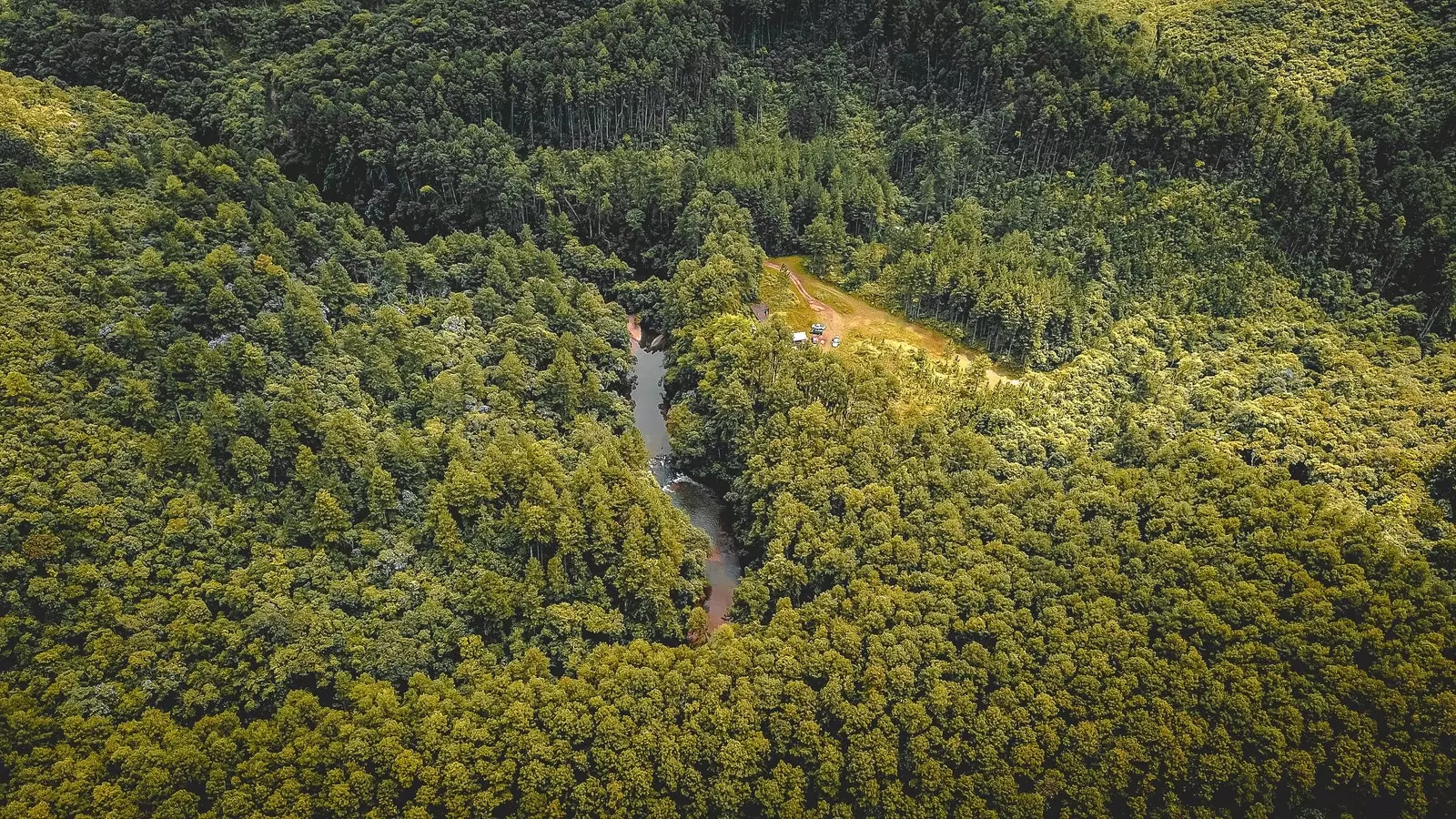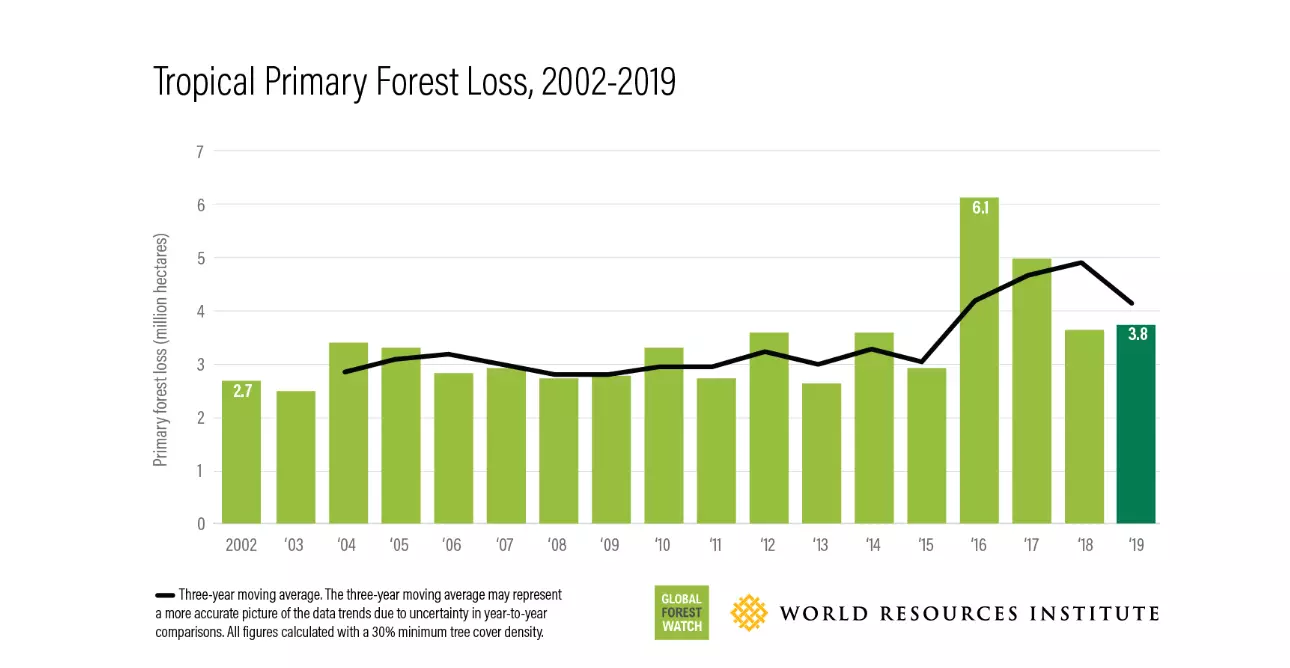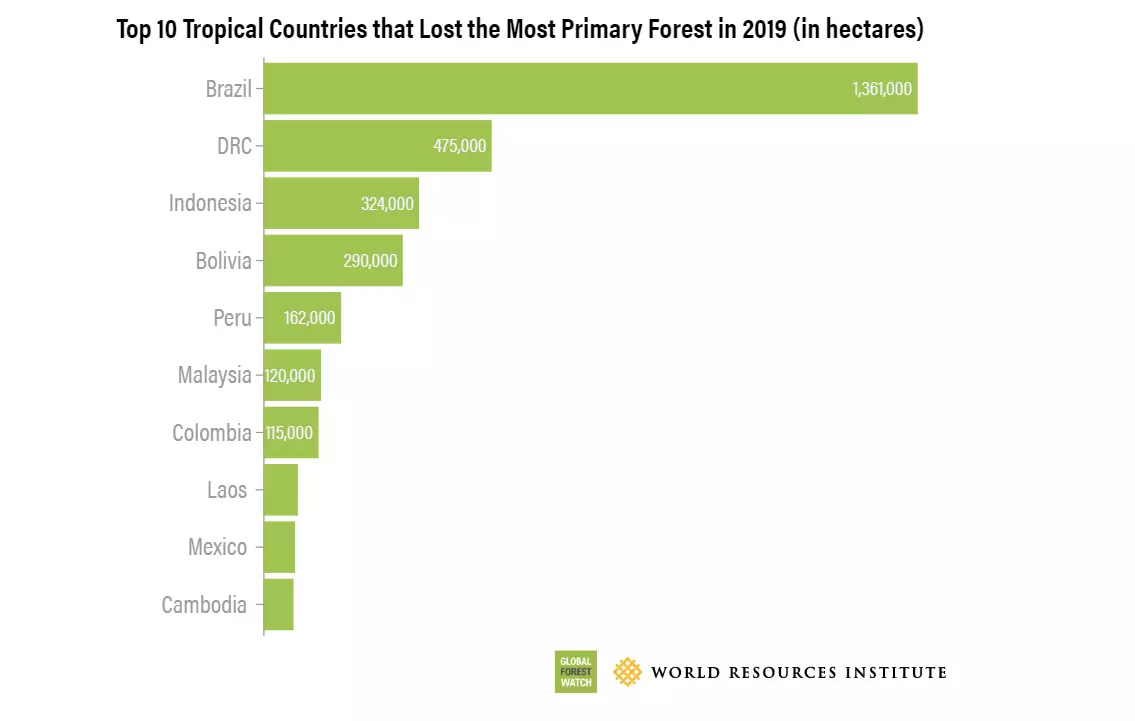
Brazil the country that lost the most forest mass in 2019.
How many forests did we lose last year? According to the latest report by the University of Maryland and published by Global Forest Watch, we lost a primary rainforest soccer field every 6 seconds in 2019.
Almost a third of that loss, 3.8 million hectares, Occurred in primary moist tropical forests , areas of mature tropical forest that are especially important for biodiversity and carbon storage. "That is equivalent to losing a soccer field of primary forest every 6 seconds throughout the year," they point out from the organization.
The loss of primary forests (forest cover that has not been altered by humans) was 2.8% more than in 2018, and has remained high for the last two decades despite efforts to stop deforestation.
Although the rate of primary forest loss was lower in 2019, compared to record years like 2016 and 2017, **it is still the third highest since the turn of the century. **
“Data from 2019 reveals that several countries suffered record losses and fires created staggering impacts on primary forests and beyond. Although the situation remains bleak globally,** some countries showed signs of improvement**, offering lessons for other nations.

Data from 2002.
**Brazil is at the head of the most deforested countries on the planet, ahead of Bolivia, the Democratic Republic of the Congo, Indonesia, Bolivia, Peru and Malaysia. **
On its own, it accounted for more than a third of all tropical moist primary forest losses worldwide. Forest fires in the Amazon resulted in unprecedented loss . 2019 was the worst year for its primary forests in 13 years. Bolsonaro's policies seem to be behind these data.
However, as the report states, the forest fires in Brazil did not contribute significantly to primary forest loss in 2019 , given that many of the fires occurred in areas already deforested for agriculture and livestock.
The same cannot be said for bolivia , whom the report points to as the country that has experienced** a record loss of tree cover due to fires**, both in primary forests and in surrounding forests. The total loss of tree cover in the country in 2019 was 80%. These fires were due to human activity, for agricultural plantations, and climate change.
While in Africa,** deforestation is fueled by the Congo Basin**, especially in areas of cyclical agriculture that serve to feed the local population.
Although old-growth forest loss decreased slightly from 2018,** 2019 saw the third-highest total annual loss on record**. “The loss of primary forests in the protected areas of the Democratic Republic of the Congo increased slightly, especially in the reserves and hunting areas have fewer financial resources s to enforce the protection that the national parks, as well as in the eastern part of the country, where there is more pressure and social conflicts”.

Most deforested countries in 2019.
Positive news? As one of the leading countries in the ranking,** the loss of primary forests in Indonesia decreased by 5% in 2019**, compared to the previous year, marking the third consecutive year of lower levels of loss. **Indonesia has not seen such low levels of primary forest loss since the turn of the century. **
Colombia it has also experienced a drop in data in 2019, after years of flooding due to the FARC conflicts in the Amazon.
And the report also talks about the case of Australia , the worst year in its entire history, with a six-fold increase in tree cover compared to the previous year.
“The bushfires in Australia caused hundreds of deaths, destroyed thousands of homes and killed hundreds of millions of animals. Eucalyptus-dominated forests, where the fires occurred, are well adapted to fire cycles, but the intensity, unprecedented scale and interaction of Australia's fires with drought can cause long-term damage ”, they underline.
How does 2020 look like? The report is not very encouraging, noting that the post-Covid-19 financial crisis may trigger further forest loss in order to stimulate economies with extractive industries.
That is why they add: “Instead of sacrificing forests in search of economic recovery, which will only lead to future complications for the health and livelihoods of millions of people around the world, governments can build back better. Investing in the restoration and good management of forests will create jobs , it will contribute to more sustainable economies and protect the forest ecosystems that our world needs.”
